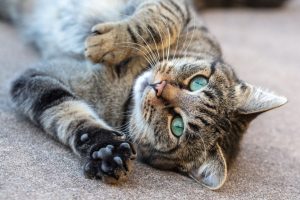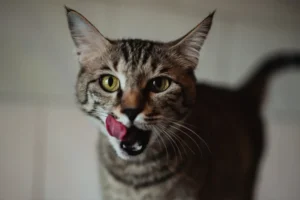Cats claws growing into their paws is a common issue that many cat owners may face, causing discomfort and potential health problems for their feline friends. But why does this happen, and what can be done to prevent it? In this blog post, we will explore the reasons behind cats claws growing into their paws and provide practical tips for keeping your cat’s claws healthy and properly trimmed.
Anatomy of a Cat’s Claw
Understanding the structure of a cat’s claw is crucial in comprehending why they continue to grow. A cat’s claw is made up of keratin, the same protein that forms our hair and nails. The outer sheath of the claw, which is often visible, is a protective layer that can be shed to reveal a sharper, healthier claw underneath. This shedding process is natural and allows the claw to grow continuously.
If a cat’s claws are not properly maintained through scratching and trimming, they can grow too long and start to curl into the paw pads. This can be painful for the cat and may lead to infections if left untreated. Regular claw trimming is essential to prevent this from happening and to keep your feline friend comfortable and healthy.
Instinctual Behaviors
Cats have a natural instinct to scratch for a variety of reasons. Scratching helps them remove the dead outer sheath of their claws, revealing a sharp new claw underneath. It also helps cats stretch their muscles and mark their territory with scent glands located in their paw pads.
However, if a cat does not have appropriate scratching surfaces available to them, they may resort to scratching furniture or carpets. This can lead to excessive claw growth and potential curling into the paw pads. Providing your cat with scratch posts or pads can redirect this behavior and help maintain their claws at a healthy length.
Remember, understanding the anatomy of a cat’s claw and their instinctual behaviors is key to ensuring your feline friend stays happy and healthy. By providing them with the right tools and environment, you can help prevent their claws from growing into their paws.
Consequences of Overgrown Claws
Having overgrown claws can be quite uncomfortable and even dangerous for our feline friends. When a cat’s claws grow too long and start to curve into their paws, it can lead to a variety of health issues. For instance, the claws may puncture the skin, causing infections or abscesses. Additionally, overgrown claws can make it difficult for cats to walk or groom themselves properly, leading to pain and discomfort. In severe cases, ingrown claws can even affect a cat’s ability to use the litter box effectively, causing hygiene issues. To prevent these potential consequences, it’s essential for cat owners to regularly check and trim their cat’s claws.
Proper Claw Care
Trimming a cat’s claws may seem like a daunting task, but with the right technique and tools, it can be a straightforward and beneficial part of your pet care routine. To safely trim your cat’s claws, start by getting them comfortable and secure, perhaps by wrapping them in a towel or having someone hold them gently. Use specialized cat nail clippers or human nail clippers with caution, ensuring you only trim the sharp tip of the claw and avoid cutting too close to the quick. If you’re unsure about trimming your cat’s claws yourself, consider seeking guidance from a professional groomer or veterinarian. Regular trimming every 2-4 weeks can help prevent overgrown claws and keep your cat happy and healthy.
Tips for Trimming Your Cat’s Claws:
- Choose the right tools: Opt for cat-specific nail clippers or human clippers with a sharp, precise edge.
- Be gentle and patient: Take your time and don’t rush the process to avoid stressing your cat.
- Use positive reinforcement: Reward your cat with treats or praise after trimming their claws to create a positive association.
- Check for the quick: Be cautious not to cut into the quick, which can cause bleeding and discomfort for your cat.
- Stay consistent: Make trimming your cat’s claws a regular part of your grooming routine to prevent overgrowth.
Remember, proper claw care is essential to your cat’s overall well-being and happiness. By taking the time to trim their claws regularly, you can help prevent them from growing into their paws and avoid potential health issues down the road.
Scratching Posts and Alternatives
If you want to prevent your cat’s claws from growing into their paws, providing appropriate scratching outlets is key. Scratching posts are a fantastic way for cats to maintain their claws. These posts offer a satisfying surface for your cat to scratch on, helping to naturally trim their claws and prevent overgrowth. Make sure to place the scratching post in a prominent and easily accessible area where your cat likes to scratch.
Additionally, you can explore alternative scratching options. Some cats prefer different surfaces to scratch on, such as cardboard scratchers, sisal mats, or even tree bark. By offering various scratching alternatives, you give your cat the chance to indulge their natural scratching instincts while keeping their claws healthy and in check.
Remember, consistency is crucial when introducing scratching posts or alternative surfaces. Encourage your cat to use these outlets by placing them strategically throughout your home and rewarding them for using them. By providing these appropriate scratching outlets, you can help prevent your cat’s claws from growing into their paws and promote their overall well-being.
Professional Grooming Options
Sometimes, no matter how many scratching posts or alternatives you provide, your cat’s claws may still grow too long. In such cases, seeking professional grooming assistance can be incredibly helpful. Veterinarians and professional groomers have the expertise and tools to properly trim your cat’s claws, preventing them from becoming overgrown and potentially growing into their paws.
Regular visits to a professional groomer can ensure that your cat’s claws are maintained at a healthy length, reducing the risk of injury or discomfort. Additionally, professional groomers can check for any signs of underlying issues related to your cat’s claws or paws, providing you with peace of mind and ensuring your cat’s overall paw health.
If you’re unsure about how to safely trim your cat’s claws or if your cat’s claws are constantly overgrown, consider consulting with a professional groomer or veterinarian. They can offer expert guidance and care to keep your cat’s claws in top condition, preventing them from growing into their paws and promoting a happy, healthy feline friend.
Additional Insight: Consider using nail caps for your cat as another alternative to prevent their claws from growing into their paws. These soft, silicone caps can be applied to your cat’s claws to protect furniture and human skin from scratching, while also helping to naturally wear down the claws. Consult with your veterinarian to see if nail caps are a suitable option for your cat.
Interesting Facts About Cat Claws
Did you know that a cat’s claws are retractable, allowing them to control when they need their claws for hunting or self-defense? This unique feature helps keep their claws sharp and ready for action.
Another fascinating fact is that a cat’s claws are made of keratin, the same protein that makes up human hair and nails. This tough material gives their claws durability and strength to climb, scratch, and dig as needed.
Cats’ claws are also designed to help them maintain balance and agility. When a cat stretches, their claws come out, providing traction and stability. This natural adaptation allows them to navigate various terrains with ease.
Now, here’s a crucial insight for cat owners: regular claw trimming is essential to prevent overgrowth and potential issues like ingrown claws. If left unchecked, claws can grow into a cat’s paws, causing pain and discomfort. Keeping an eye on your feline friend’s claws and providing necessary trimming can go a long way in ensuring their well-being.
Conclusion
In taking care of your cat’s claws, you’re not just keeping them comfortable but also preventing potential health issues down the road. Remember, a little regular maintenance can go a long way in keeping your furry companion happy and healthy. So, take the proactive step of checking their claws regularly and giving them the care they need to thrive. Your cat will thank you with purrs and playful antics!
Alex, a passionate animal lover, has experience in training and understanding animal behavior. As a proud pet parent to two dogs and three cats, he founded AnimalReport.net to share insights from animal experts and expand his knowledge of the animal kingdom.









